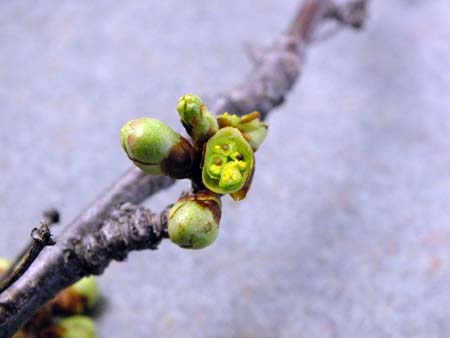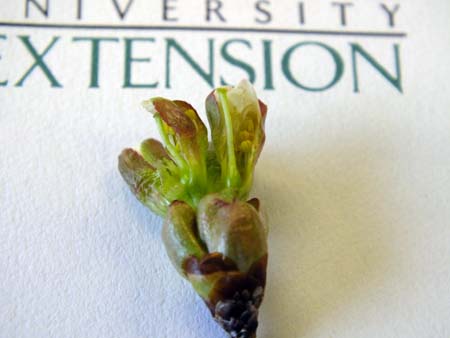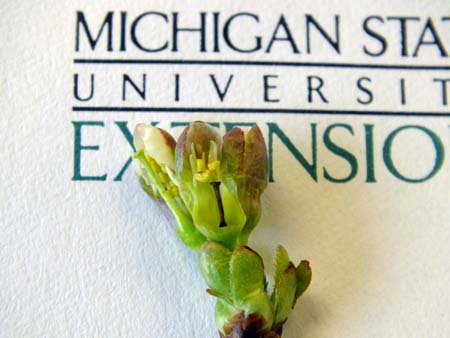How to assess flower bud damage in tart cherries
With the potentially damaging cold temperatures this season, growers should be assessing crop damage on the farm to help determine management strategies and crop potential moving forward.
Growers can survey for damage in their own orchards by collecting and dissecting flower buds. For each 10-acre block, growers should cut and collect 30 branches. To ensure a good assessment, collect branches from the lower, middle and upper canopy, as well as from trees on the edges and interior of blocks. If the block is located on a slope, make sure to collect samples from all elevations.
Open all the flower buds on each branch and inspect the pistils inside. The pistil is the long, vase-shaped organ found in the center of each blossom. The pistil should be a vibrant green color. If the pistil is black, the flower has been killed and will not produce a cherry (see pictures below). Keep track of how many buds you check and how many are dead – this will give you a ratio or percentage of viable buds.

Photo
1 shows a cross-section of four flowers still in the cluster and contains three
dead and one live pistil.

Photo
2 shows a healthy green pistil.

Photo 3 shows a black pistil indicating that the blossom
is not viable.



 Print
Print Email
Email


